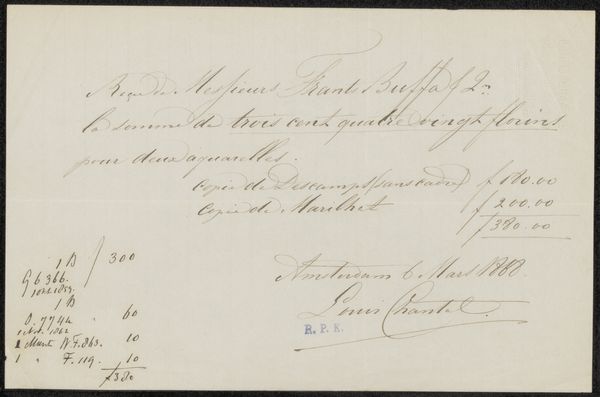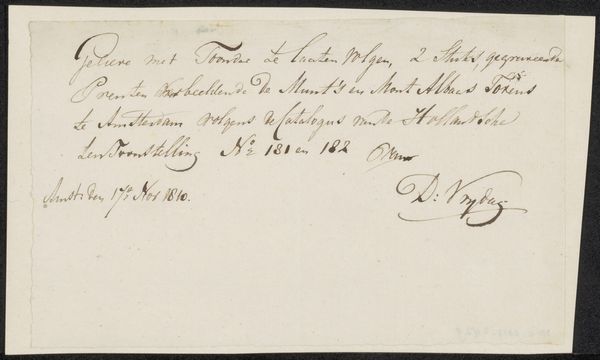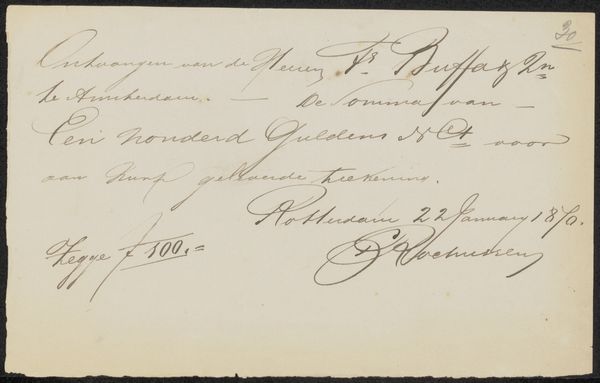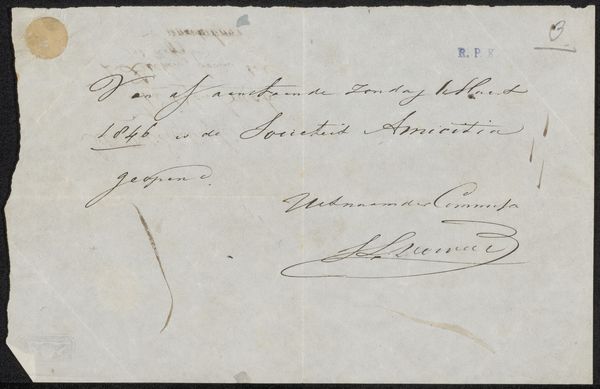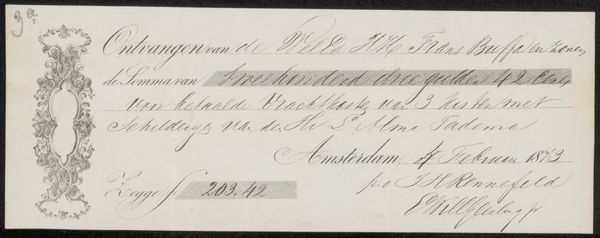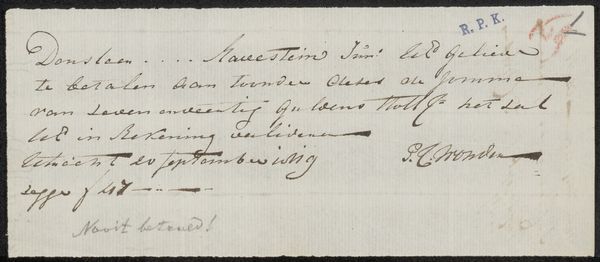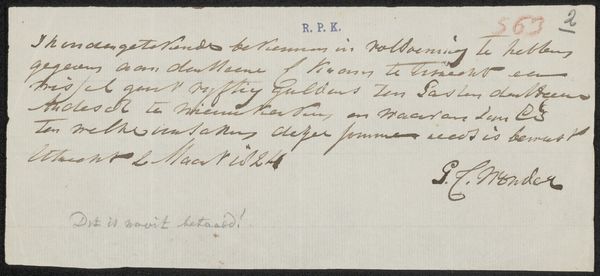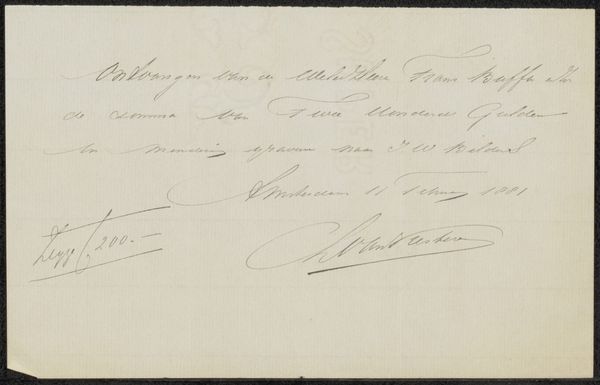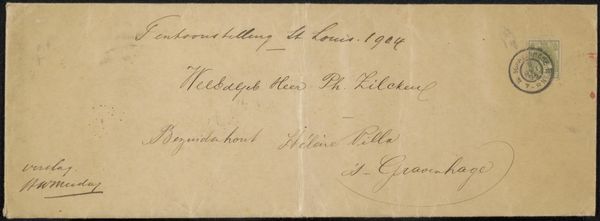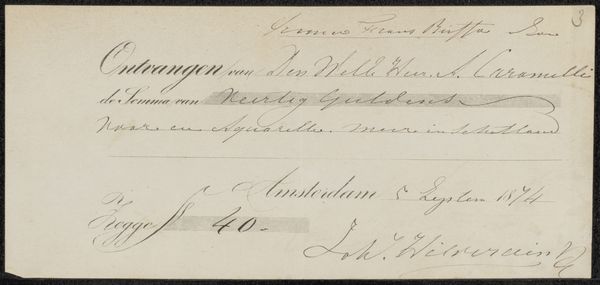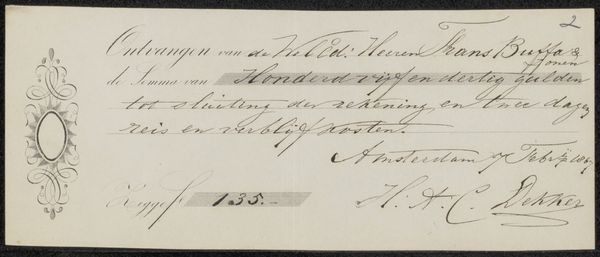
drawing, paper, ink
#
portrait
#
drawing
#
aged paper
#
script typography
#
hand-lettering
#
neoclassicism
#
hand drawn type
#
hand lettering
#
paper
#
personal sketchbook
#
ink
#
hand-drawn typeface
#
fading type
#
sketchbook drawing
#
genre-painting
#
sketchbook art
#
calligraphy
Copyright: Rijks Museum: Open Domain
This receipt, made by Elisabeth Barbara Schmetterling in 1826, is adorned with elegant calligraphy. The most prominent visual motif is the script itself, each letter a delicate stroke forming words that signify a financial transaction. The act of writing, particularly in such a decorative manner, carries symbolic weight. We see it echoed in illuminated manuscripts of the Middle Ages, where the word of God was embellished with intricate designs, elevating its importance. Here, in this receipt, the careful penmanship transforms a mundane record into something of value, almost reverential. Think of the scrolls of ancient civilizations: the Egyptians, Greeks, and Romans, who all imbued the written word with power and authority. Even today, a signature holds immense legal and personal significance. It is a symbol of identity, of agreement, of ownership, and the way Schmetterling has made her signature a flourish speaks of her own sense of self-worth as a craftsman. Such symbolic gestures are a testament to our collective, subconscious need to imbue our actions with meaning. The document’s aesthetic presentation subtly elevates its perceived value, reflecting a deeper psychological desire to find beauty and significance in even the most ordinary aspects of life. It shows how we continually return to visual forms of expression.
Comments
No comments
Be the first to comment and join the conversation on the ultimate creative platform.
